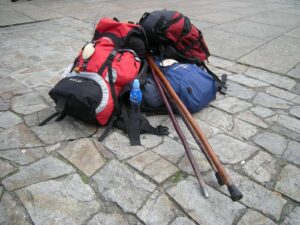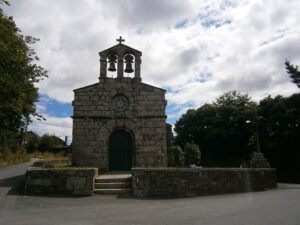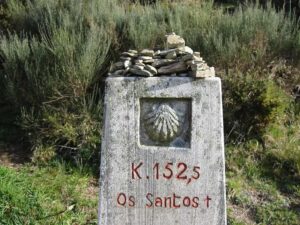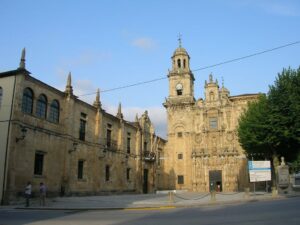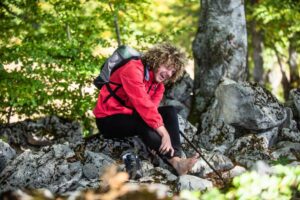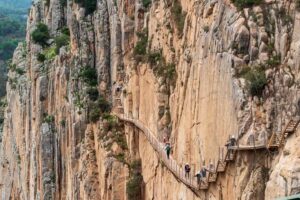Since they are the part of our body that will suffer the most, we must pay special attention and care to them. For this, we offer the following tips for an Organised trip to the Camino de Santiago and for always:
Índice de contenidos
HOW TO TAKE CARE OF YOUR FEET DURING THE CAMINO DE SANTIAGO
Before walking the Camino de Santiago from Sarria, it is recommended to start hydrating your feet, a vital part of your journey. If you already do this as part of your daily routine, you’re ahead. You should typically use a moisturising cream to soften your skin and prevent possible chafing. Doing so at night, before going to bed, would be an ideal time.
The preventive use of a moisturising cream will help avoid dryness and friction with your footwear that could cause chafing or blisters. We recommend the hand and foot cream from our friends at Amapola, which has provided us with excellent personal results. It comes in three scents: grapefruit, spearmint, and 5 flowers. You can also use petroleum jelly, which was the traditional remedy in the past; it’s effective, although it doesn’t have the same properties as a specific cream.
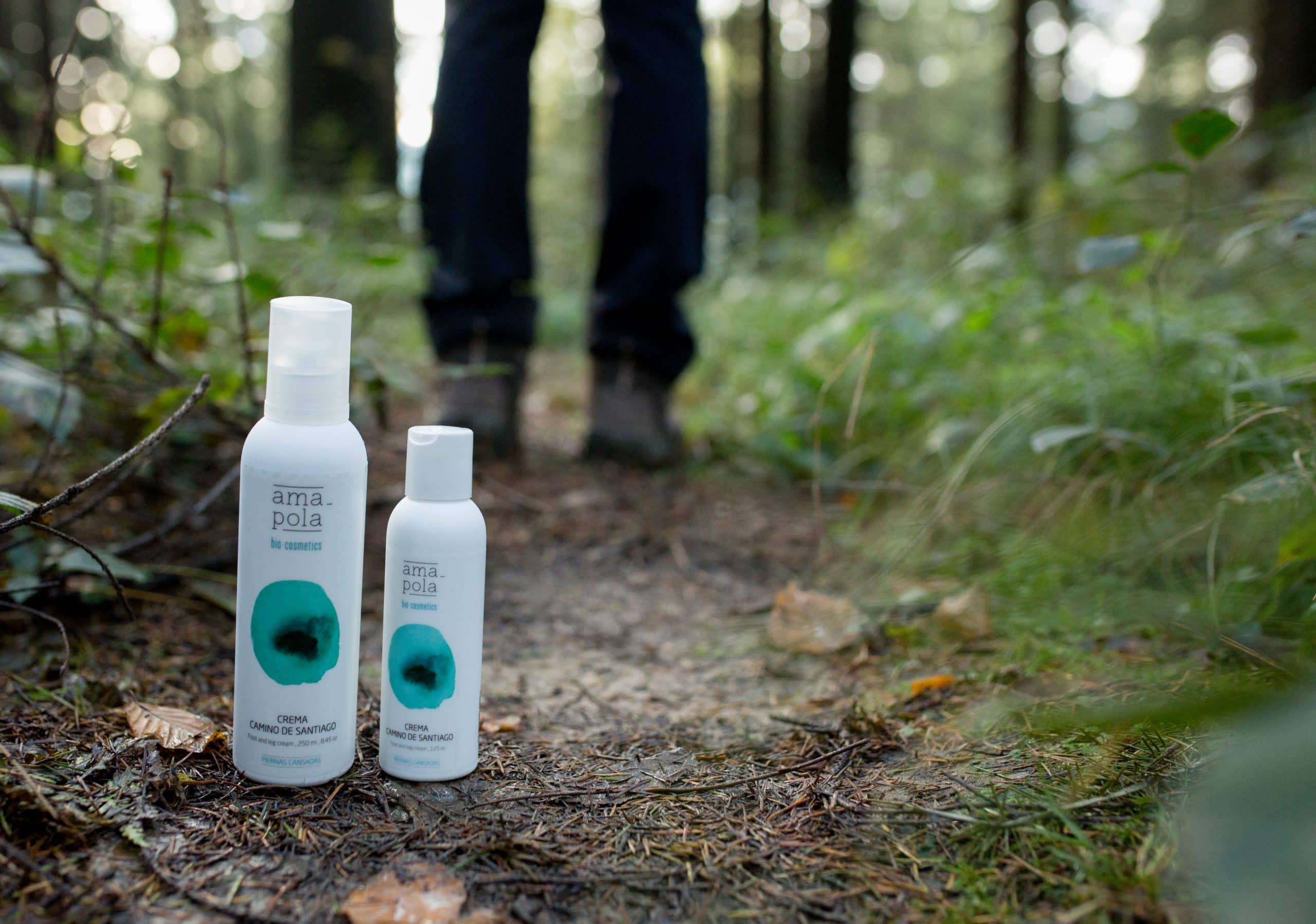
SWOLLEN FEET AT THE END OF THE STAGE
Soak your feet in warm salty water, then massage them with another moisturising cream from our friends at Amapolabio, whose properties include:
- It’s an anti-inflammatory and skin-regenerating cream.
- It promotes blood circulation and helps relax the muscles.
- It refreshes and relieves the feeling of heaviness in the feet and legs.
- It’s ideal for the whole family, including the little ones.
- Safe for pregnant women.
- All the vegetable oils used are organic and cold-pressed.
Refreshing natural formula for feet and legs based on arnica, rosemary, and menthol, which stimulates venous circulation and combats dryness and inflammation.
As a more traditional alternative, you can use rosemary alcohol and let your feet and legs air dry.
It’s advisable that after the shower, you wear flip-flops or espadrilles so your feet can “breathe.”
USING SPECIAL SOCKS AND CHOOSING FOOTWEAR TO AVOID BLISTERS AND CHAFING
To avoid chafing and potential blisters, it’s crucial to pay particular attention when choosing your footwear, using shoes or trekking boots that you have already worn and are well broken in.
It is also important to wear good seamless cotton socks: in specialised stores, there are socks that keep your feet dry, although there are also synthetic ones that work very well. If there are seams or if the sock wrinkles, it could encourage the formation of blisters. There are also anti-blister socks, although like everything in life, they are not infallible.
Another solution to prevent chafing would be to wear a thin sock underneath a thicker one. In winter and autumn, there would be no problem with this trick, but in summer, it may cause the foot to sweat more than we’d like.
If, when starting to walk, we feel slight discomfort in our feet, we should stop immediately and check if they are red. If so, we should clean the area and apply some dressing or a plaster to protect it before a blister or chafing forms.

MUSCLE MASSAGE – GOODBYE TO SORENESS
Before starting each daily stage, after a light warm-up, we recommend using rosemary alcohol to help tone your muscles, protecting them from possible strains, soreness, and injuries. The alcohol will wrap your muscles in a layer of heat, activating them before you start your walk.
After the shower, using rosemary alcohol will also help relieve the muscles quickly.
I HAVE A BLISTER – WHAT SHOULD I DO?
If, despite taking all the necessary precautions, a blister has formed, follow these steps:
- Clean the blistered area with disinfectant.
- Using a sterilised needle, drain the liquid from the blister, inserting a thread along the blister so it drains out, and wait for the liquid to disappear. Then apply Betadine with a gauze and leave it exposed to the air.
- Once this is done, you can cover the blister with a dressing, or use special protective and cushioning patches like “COMPEED” to dry it out.
NEVER CUT THE SKIN OF A BLISTER!
FOOT CARE: PAY ATTENTION TO YOUR TOENAILS
Feet are not the only part of the body that need care during the Camino de Santiago; toenails are another area that often cause discomfort, usually due to poor footwear choice (too small shoes that, going downhill, put pressure on the toes and cause “ingrown toenails”).
You should keep your toenails well-trimmed. If you have calluses or hard skin, it’s best to visit a podiatrist before starting the Camino. In your small first aid kit which you should bring to the Camino, we recommend including nail clippers and a nail file.
Regardless of our physical fitness, it’s our feet that will most determine our enjoyment and ability to continue until Santiago de Compostela. A single blister can prevent you from taking another step!
It’s true that even though we’ll transport your luggage during all stages, your feet and knees will suffer less. However, you must still give them proper care.

